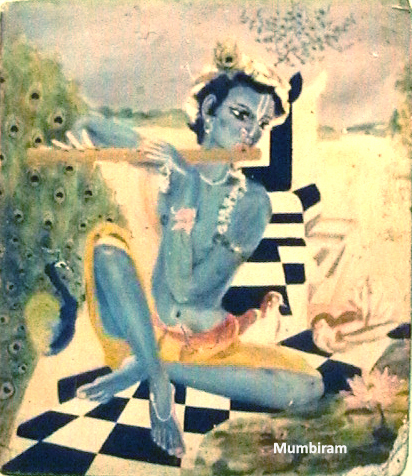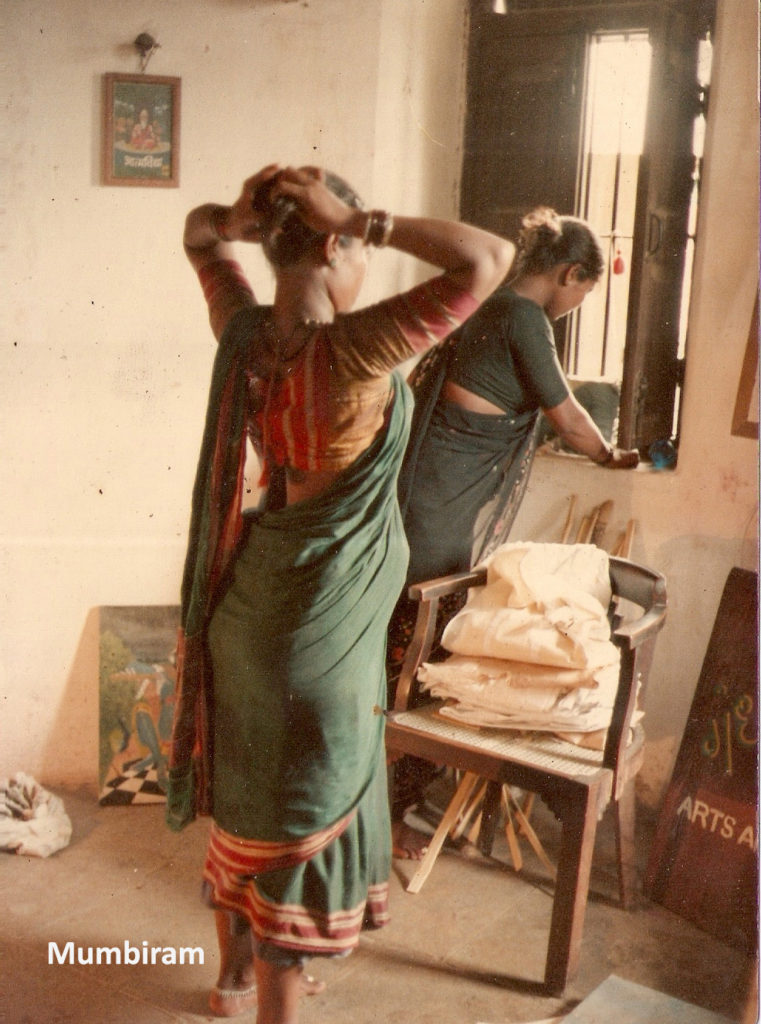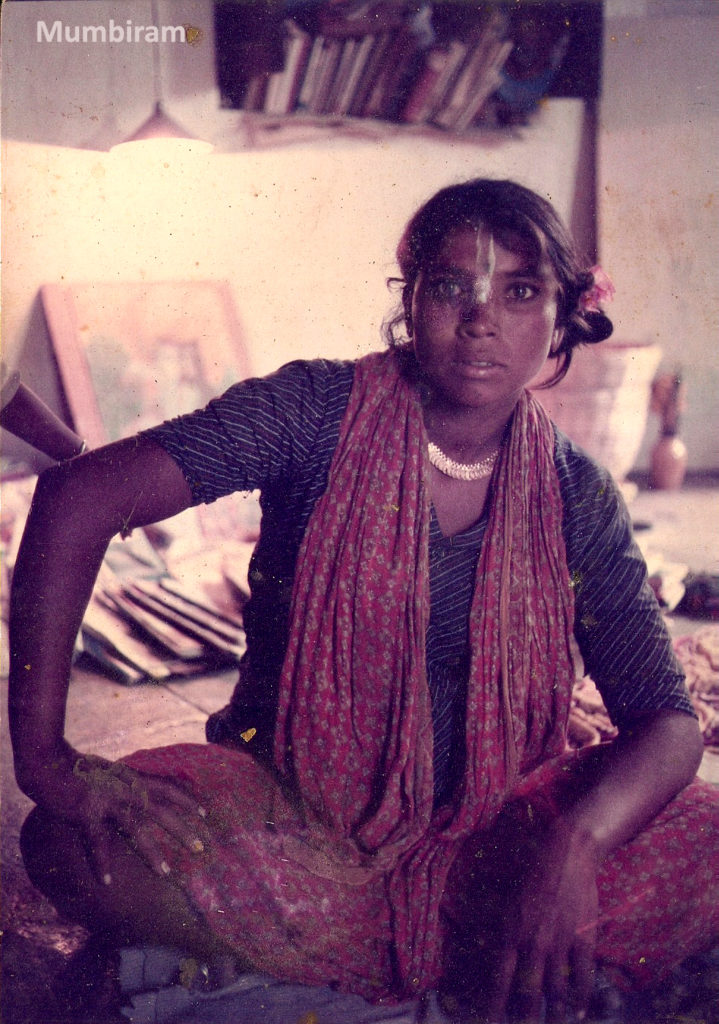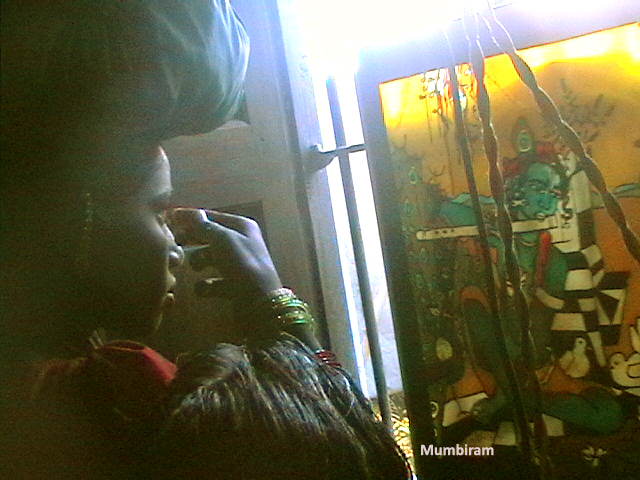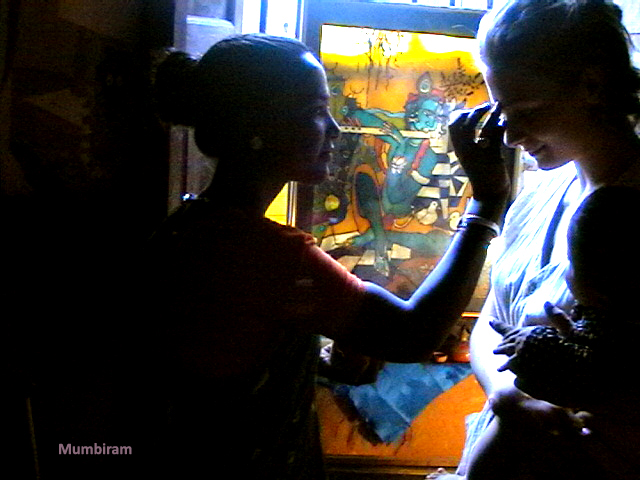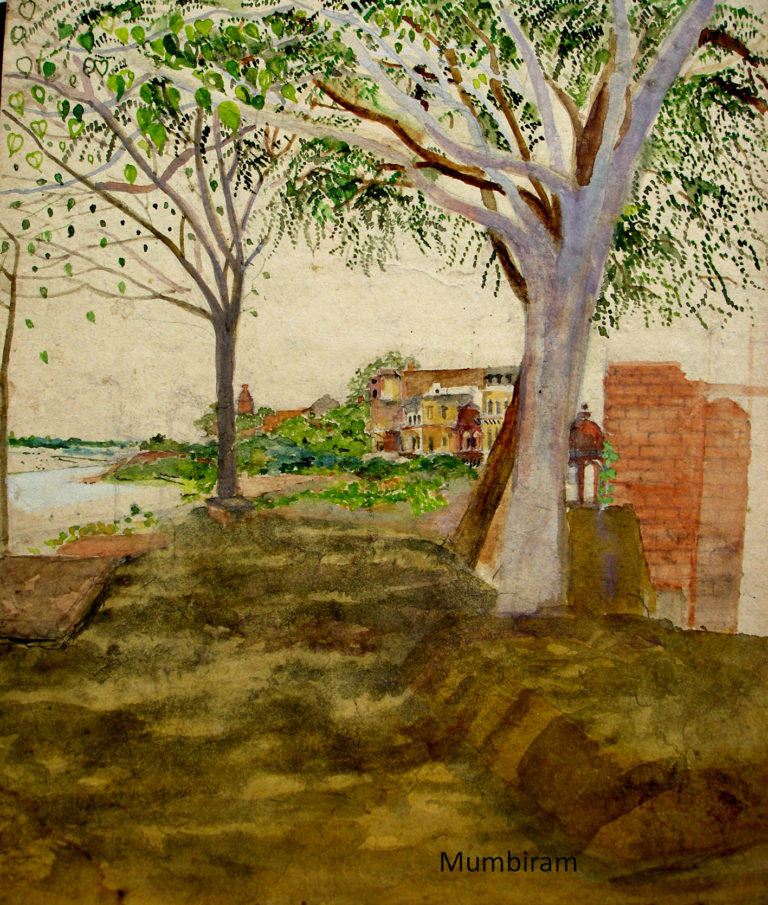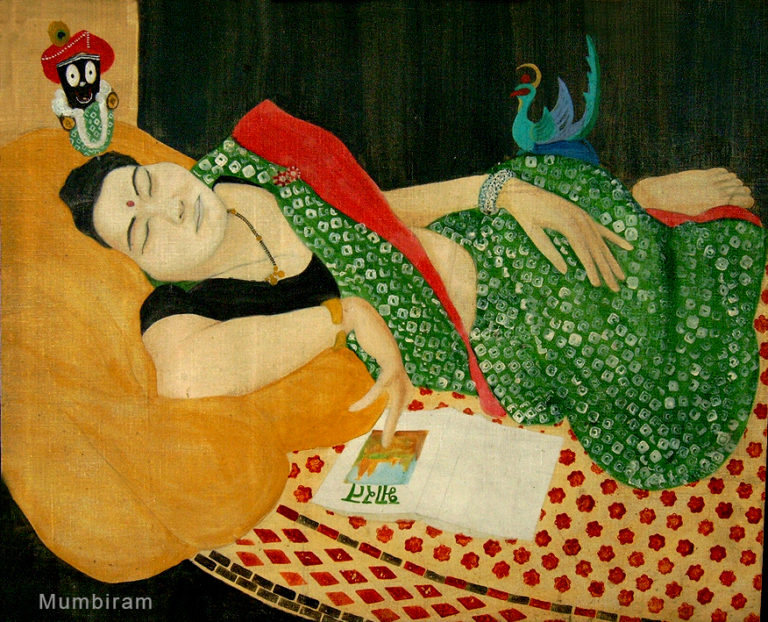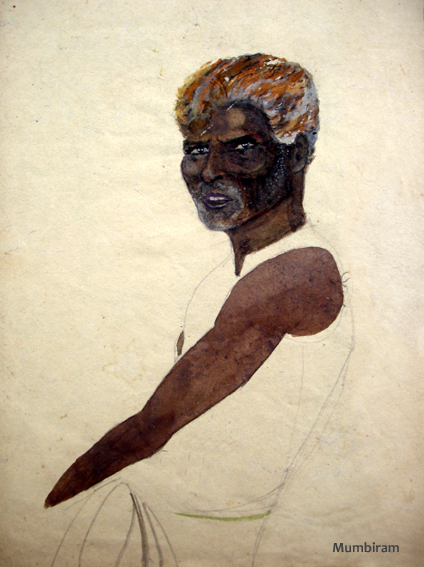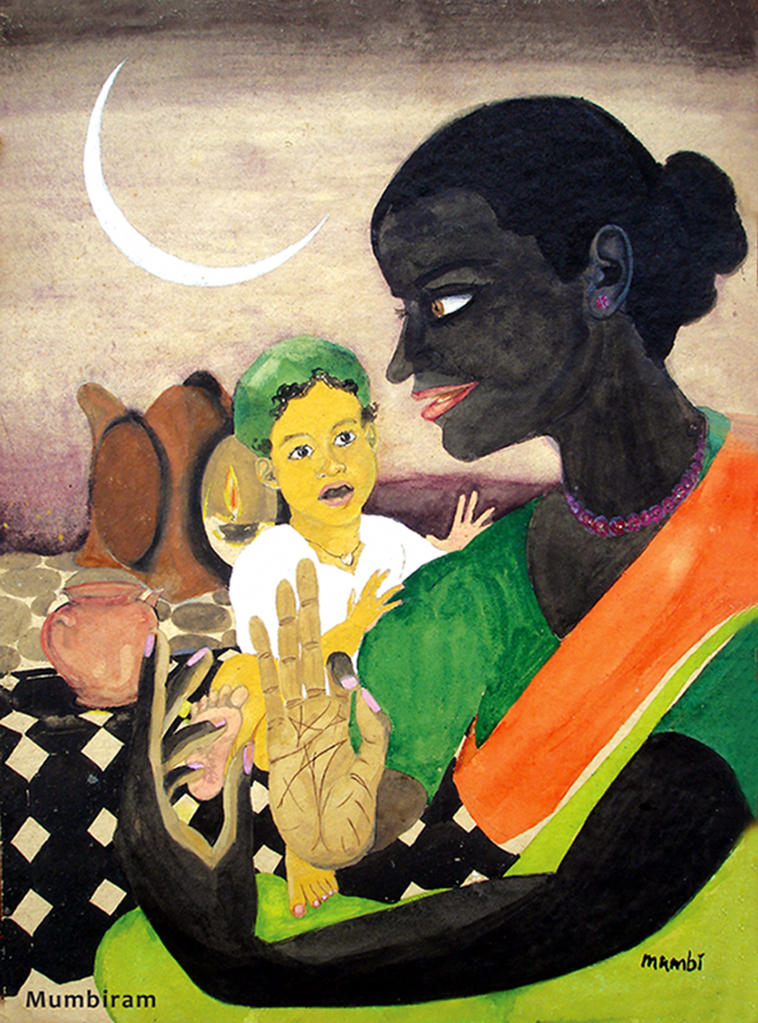Mumbiram’s vision of Krishna that is seen in this his iconic vision is very similar to what is described in this verse in the Krishna Karnamritam:
अङ्गुल्यग्रैररुणकिरणैर्मुक्तसंरुद्धरन्ध्रम्
वारम् वारम् वदनमरुता वेणुमापूरयन्तम्।
व्यत्यस्ताङ्घ्रिम् विकचकमलच्छायविस्तारिनेत्रम्
वन्दे बृन्दावनसुचरितम् नन्दगोपालसूनुम्॥ २–५॥
“Krishna is sitting with his one leg crossed across the other. His wide beautiful eyes remind one of a full bloomed lotus while he is filling the flute with the wind from his lips. He is deftly opening and closing the holes of the flute with the tips of his beautiful fingers that seem to be emanating the rays of the early morning sun. All the activities of this son of cowherd chief Nanda are wonderful. I find them worshipable.“
Another description in the Yugala Geetam has a similar vision of Krishna. Here the Gopis are describing the beauty of Krishna to each other.
वामबाहुकृतवामकपोलो वल्गितभ्रुरधरार्पितवेणुम् ।
कोमलाङ्गुलिभिराश्रितमार्गं गोप्य ईरयति यत्र मुकुन्दः ॥ २॥
“Just remember Krishna playing upon his flute. He tilts his head sideways till his left cheek is touching his left shoulder. His eyebrows are curving exquisitely. He places the flute at his lips. Then with his graceful fingers he opens and closes the holes of the flute as he fills the ambience with his resounding melodies. That is Mukunda, the Bestower of Liberation, the one with a smile that reminds you of delicate white Kunda flowers that are placed one next to the other in a bewitching magical array. ll 2 ll”
